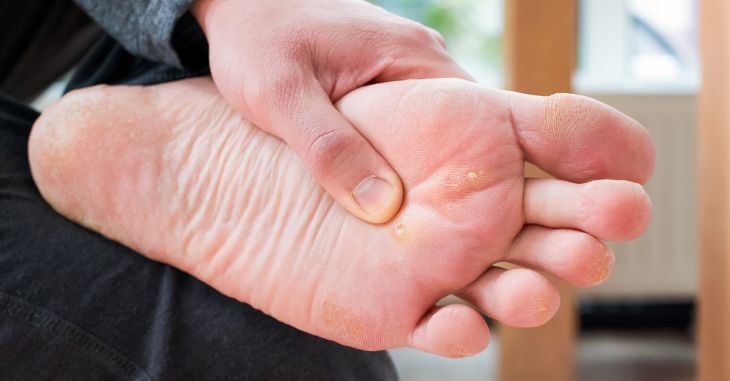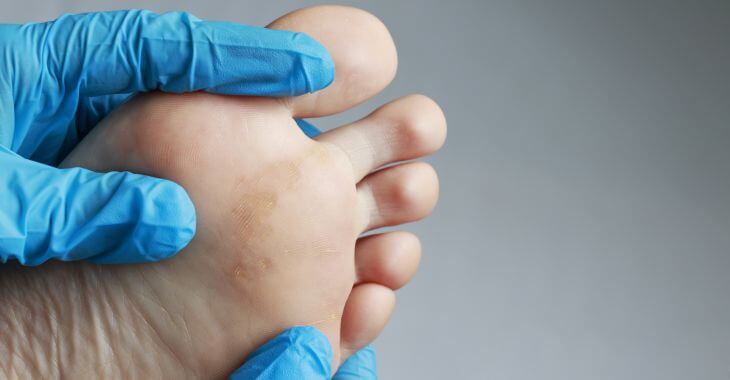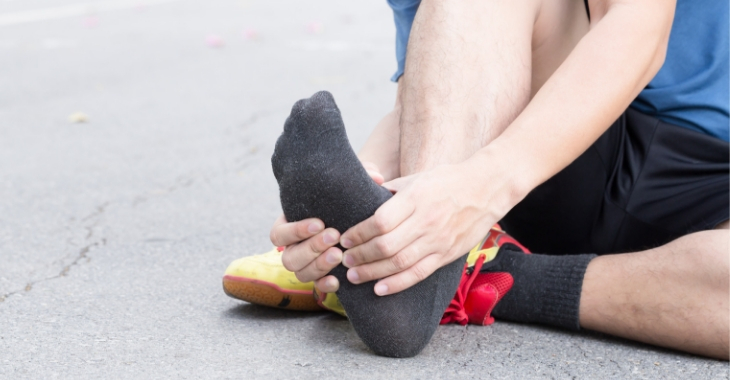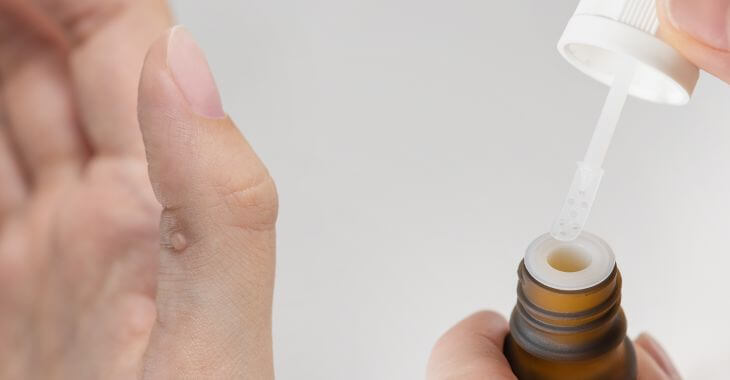Corn vs Wart: Which Growth Is on Your Foot?

When you discover an unusual growth on your foot, it can be a cause for concern. Two common growths that can occur on the feet are corns and warts. While they may share some similarities, understanding the differences between a corn vs wart is essential for proper diagnosis and effective treatment.
Seed Corn vs. Plantar Wart
Corns, also known as seed corns clavus or heloma, are thickened areas of skin that typically develop in response to friction or pressure. They are often round or conical in shape and have a hard, raised core at the center. Corns are commonly found on the toes and the areas between the toes.
Warts on the foot, known as plantar warts, are caused by the human papillomavirus (HPV). Plantar warts typically appear as small, fleshy growths on the sole of the foot. Unlike corns, warts may have tiny black dots within them, which are actually small blood vessels supplying the wart.
Wart vs. Corn: Causes
The most common cause of corns is repetitive friction and pressure on specific areas of the foot, often due to ill-fitting shoes or high heels. Toe deformities or abnormalities in the toe shape or structure, such as hammer toes or bunions, can also increase the risk of developing corns.
Plantar warts are caused by specific strains of HPV that enter the skin through tiny cuts or breaks. Walking barefoot in public places like swimming pools and locker rooms can increase the risk of HPV exposure and infection.
Difference Between Corn and Wart Symptoms
If you have a growth on your foot or toes, there is a difference between corn and wart symptoms that can help identify your growth. If you have a corn, these are the possible symptoms:
- Hardened Skin: Corns have a dense, thickened patch of skin that can be yellow, gray, or brown in color.
- Tenderness: Corns can be painful, especially when pressed or rubbed against footwear.
- Cone-Shaped Core: At the center of a corn, there is a core of hard tissue that may be sensitive to pressure.
- Location: Corns are typically found on weight-bearing areas of the feet, such as the tops and sides of toes or the ball of the foot.
Warts can appear anywhere on the body, but if you have one on your feet or toes, it may be a plantar wart and have these symptoms:
- Fleshy Growth: Plantar warts often appear as small, raised, and rough-textured growths on the sole of the foot.
- Black Dots: Some plantar warts may have black dots or specks within them, which are actually tiny blood vessels.
- Pain or Discomfort: Plantar warts can be painful, particularly when walking or standing, as they can press on nerve endings.
- Callus Formation: Sometimes, plantar warts can be mistaken for calluses due to their thickened appearance.
Since both growths can be uncomfortable and appear on the feet, it is common for them to be misidentified. However, it is important to know which growth is on your foot to determine the best treatment.
Corn vs Wart Treatment
If you have a seed corn on your foot or toes, here are the possible treatment options:
- Footwear Modification: Wearing shoes that fit properly and provide adequate cushioning can help alleviate pressure on corns.
- Padding: Over-the-counter padding or moleskin can be used to protect corns from friction.
- Salicylic Acid: Topical treatments containing salicylic acid can help soften and gradually remove the thickened skin of corns.
- Pumice Stone: Gently using a pumice stone after soaking your feet can help reduce the thickness of corns.
- Orthotics: Custom orthotic insoles may be recommended to redistribute pressure on the feet.
- Surgery: In severe cases, a podiatrist may need to surgically remove a corn.
If you have a plantar wart on your foot, the following are possible treatments:
- Over-the-Counter Treatments: Non-prescription treatments like salicylic acid patches or gels can be applied at home to gradually remove the wart.
- Cryotherapy: A healthcare provider can use liquid nitrogen to freeze and remove the wart.
- Electrocautery: This procedure involves burning the wart tissue using an electrical current.
- Laser Therapy: Laser treatment can be effective in removing plantar warts.
- Prescription Medications: In some cases, topical prescription medications may be prescribed.
- Surgical Removal: For large or persistent plantar warts, surgical excision may be necessary.
Both corns and warts can be treated with conservative treatments to effectively relieve pain and discomfort. In severe cases, removal may be required, including opting for surgery when conservative treatments are not effective in relieving pain or discomfort.

While corns and warts can appear similar, they are distinct conditions with different causes, symptoms, and treatments. If you are uncertain about a growth on your foot, it is essential to seek professional medical advice from a podiatrist or your doctor to receive an accurate diagnosis and treatment.
The information provided on this website, including text, graphics, images, and other materials, is intended solely for informational purposes and should not be used as a substitute for professional medical advice, diagnosis, or treatment.




)